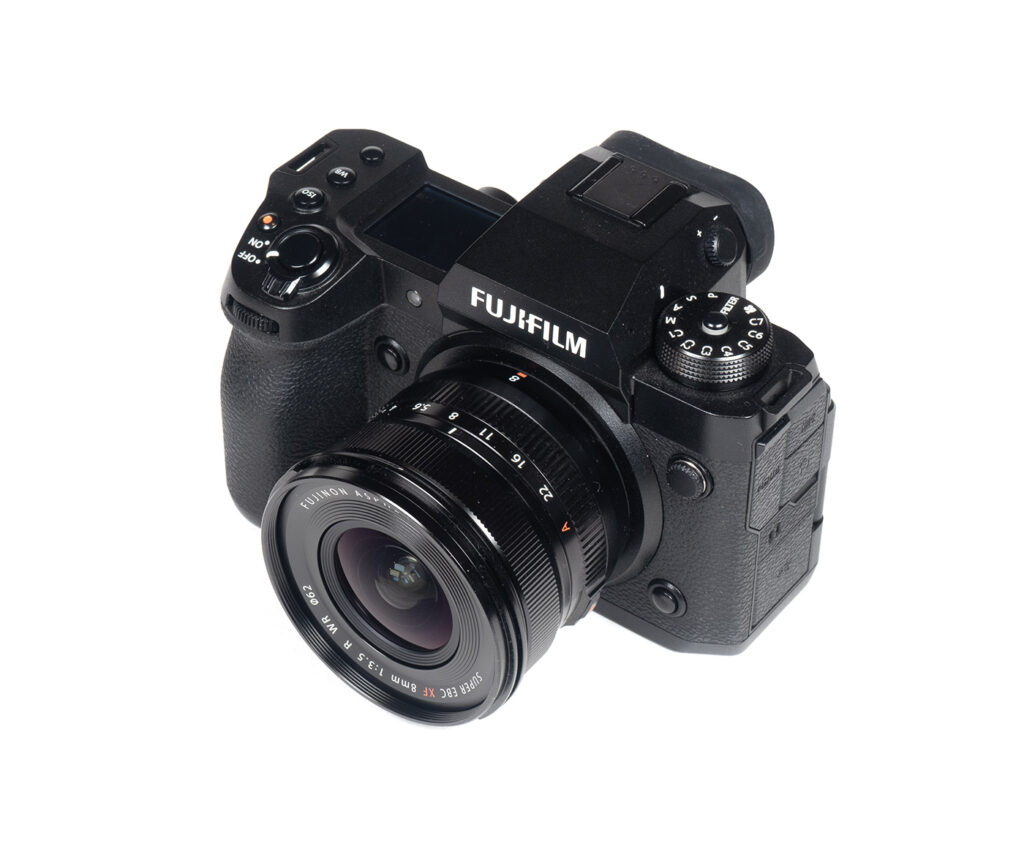Fujifilm has many prime lenses in their lineup but strangely, there are only 2 in the ultra-wide segment (as of the time of this writing). There’s the 14mm f/12.8 which isn’t all that wide really (equivalent to FF 21mm), and then there’s the rather extreme Fujinon XF 8mm f/3.5 R WR. You may debate whether a 8mm (=FF 12mm) was really a high priority with the large gap in between, but it is what it is, so let’s check it out. At $800 USD, it isn’t exactly a cheap lens, but it undercuts the in-house zoom lenses alternatives by quite a margin at least.
One of the most appealing aspects of the XF 8mm f/3.5 R WR is its size and low weight. Most will agree that such a focal length is a bit on the exotic side, thus carrying it around with the rest of your gear shouldn’t be a burden – and the XF 8mm fits the bill. This also makes it ideal for video use on gimbals, for instance. The build quality is excellent, following the tradition of the XF 16mm f/2.8 R WR and the likes. It’s also water-resistant, as the “WR” in the name implies. The lens body is made of metal down to the mount. The focus ring action is silky smooth, and the dedicated aperture ring has distinctive clicks plus an aperture lock. The AF is quick and silent. Manual focusing works “by-wire”, as usual.

| Specifications | |
|---|---|
| Optical construction | 12 elements in 9 groups (3x aspherical, 2x ED) |
| Number of aperture blades | 9 (rounded) |
| min. focus distance | 0.18m (max magnification: 0.07x) |
| Dimensions | φ 68mm×52.8mm |
| Weight | 215g |
| Filter size | φ 62mm |
| Hood | barrel-shaped, bayonet mount, included |
| Other features | aperture-ring w/ aperture lock weather-resistant |
Distortions
Manufacturers have to balance their lens design according to various parameters. Fujifilm tends to let image distortions float in favor of having more compact lenses. And we can see this with the 8mm f/3.5 as well. In RAW images, the barrel distortion is very heavy at over 5.5%. Using uncorrected images isn’t really an option with distortions of this level. Auto-correction fixes the issues, of course, but that’s not without drawbacks, as we’ll see later on.
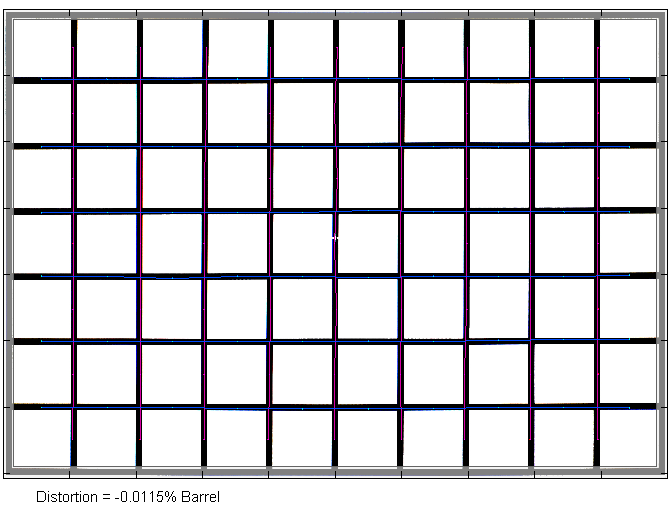
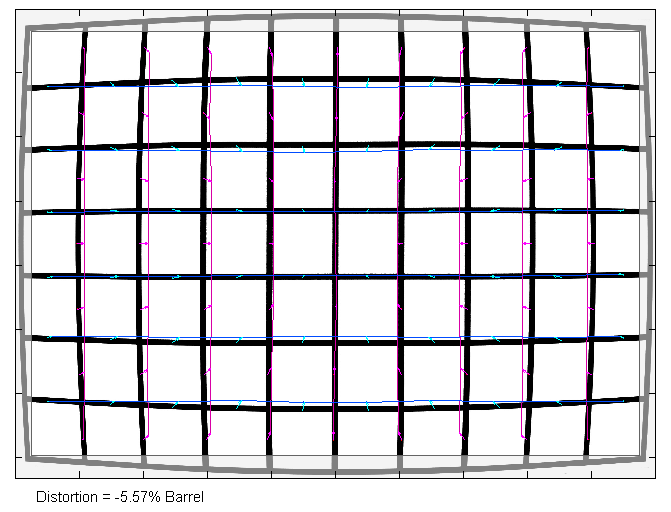
Vignetting
The RAW vignetting is extremely high for an APS-C lens. Of course, this is in part because of the ultra-wide character of the Fujinon XF 8mm f/3.5 R WR. However, 2.6EV (f-stops) at f/3.5 is beyond of what we define as acceptable limit here. Stopping down to f/5.6 shaves off about 1 f-stop that’s still beyond our usual scale for APS-C lenses. Auto-correction helps again, reducing the light falloff down to just under 1 EV (f-stop) at f/3.5, and the issue is mostly resolved from f/5.6 – at the cost of increased corner noise due to the signal boost.

MTF (resolution) at 26 megapixels
The resolution characteristic of the Fujinon XF 8mm f/3.5 R WR is a bit of a mixed bag – although to be fair, this is to be expected from a lens THIS wide. The center quality is excellent straight from f/3.5, but the quality drops “sharply” the more you move away from the center. The near-center quality is still very good, but the outer image field is a bit soft. Stopping down to f/5.6 is a good idea. While the center quality suffers a bit, the border quality is lifted to very good levels and the corners are at least good. Diffraction reduces the results from f/8 and f/11 should be avoided.
The centering quality of the tested sample was good. The field curvature is acceptable.
Please note that the MTF results are not directly comparable across the different systems!
Below is a simplified summary of the formal findings. The chart shows line widths per picture height (LW/PH) which can be taken as a measure of sharpness. If you want to know more about the MTF50 figures, you may check out the corresponding Imatest Explanations.
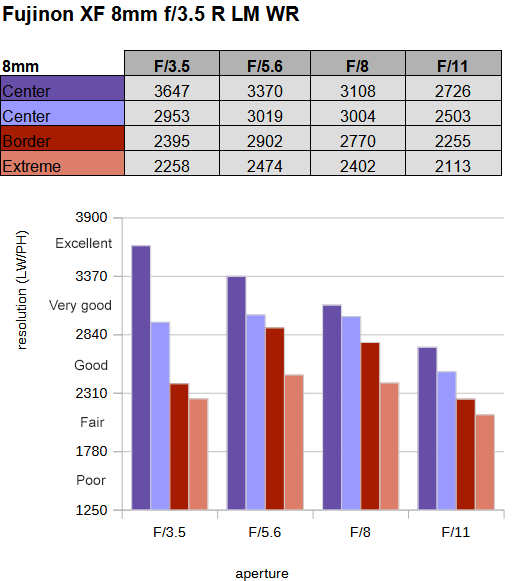
MTF (Corrected)
Disclaimer: The quality of distortion correction is heavily dependent on the used RAW converter.
While the above is still decent overall, the provided figure is for RAW files. When measuring the performance of distortion-corrected images, the results are quite a bit lower in the outer image field. Namely, the corners don’t make it across the “fair” mark then – which isn’t all that great even when taking the extreme focal length into account.

Chromatic Aberrations (CAs)
Lateral CAs are elevated at f/3.5 with an average pixel width of more than 2px at the image borders. Without autocorrection, this will be noticeable. Stopping down reduces the issue, and it’s more acceptable at f/5.6 and reaches decent levels from f/8 onward.
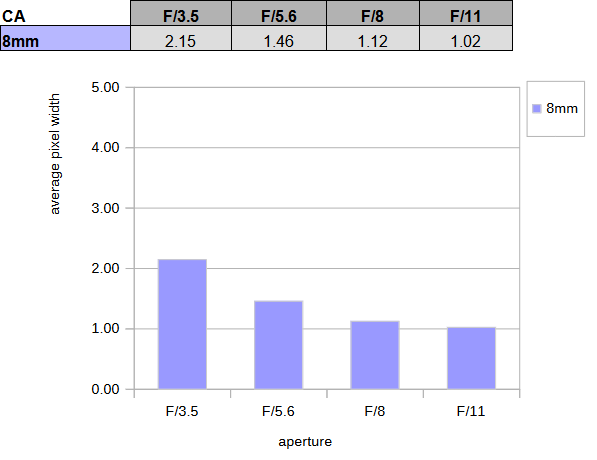
Competition
While 8mm is on the extreme end of the segment, the Fujinon isn’t without competition – nor was it the first one to arrive. The latter glory goes to the Laowa 9mm f/2.8 Zero-D released back in 2018. It’s a fully manual lens, although this shouldn’t be a showstopper in this lens class. It’s pretty decent and more affordable, too. If your desires can be met with a more sane focal length, there’s also the Samyang AF 12mm f/2 X – which is a pretty interesting in terms of price/performance.
Sample Images
Let's be straight about it - the Fujinon XF 8mm f/3.5 R WR isn't Fujifilm's greatest shot. You can excuse a lot of things due to the extreme focal length. However, while the center is great, the corners are too soft with activated auto-correction - and the latter is basically required due to the fundamentally heavy image distortion, high vignetting and high CAs. Having said that, if you throw the latest and greatest AI tooling at it - like DxO RAW / PhotoLab - the results aren't terrible either. You can also argue that the dramatic perspective the lens can give you is more important than its optical qualities.
On the positive side, the build quality feels great - it's in the tradition of Fujifilm's "compact prime series" (16mm f/2.8, 23mm f/2, 35mm f2 and 50mm f/2 R WR). And being compact is a good thing with such an exotic focal length, so it's not a burden in your camera bag. An alternative such as Fuji's 8-16mm f/2.8 R LM WR isn't everybody's cup of tea in this respect.
While the Fujinon XF 8mm f/3.5 R WR has its obvious shortcomings, it's still a fun lens to use. If you require optical perfection, especially at 40mp, you should look elsewhere, though.
The Good
- Dramatic perspective, lots of it
- Ultra lightweight and compact
- Great build quality
The Bad
- Optical quality is a bit ... meh
- No aperture de-click option
- A bit pricey for what it is
-
Optical Quality
-
Build Quality
-
Price / Performance


